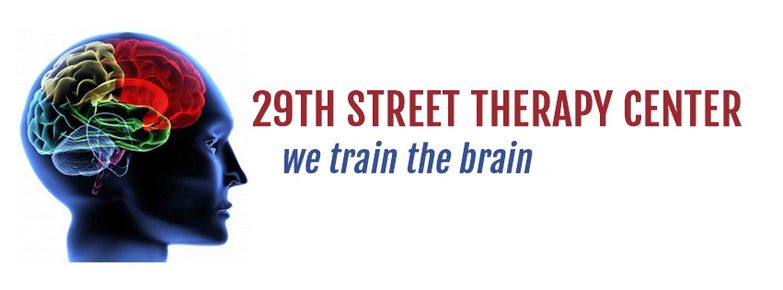Clinic Services
Modified Barium Swallow Studies (MBSS)
A modified barium swallow study (also referred to as an “MBSS”) is a test to evaluate how an individual is swallowing foods and liquids. This procedure is currently provided through our contracted services with Grady Memorial Hospital. This radiographic procedure provides a direct, dynamic view of one's oral, pharyngeal and upper esophageal function and provides clinically useful information for diagnosis and treatment planning. The SLP works in collaboration with the attending radiologist with the focus on swallowing physiology and function as well as airway safety.
Fiberoptic Endoscopic Evaluation of Swallowing & Mobile FEES
Fiberoptic endoscopic evaluation of swallowing (FEES) is a portable procedure that may be completed in an out patient setting or at the hospital bedside by passing a video endoscope transnasally. FEES provides an excellent view of the laryngeal anatomy with a birds-eye view of all structures. FEES provides the opportunity for frequent use without the concerns of radiation exposure and can be used within therapeutic contexts (via biofeedback) as well as for diagnostic therapy to assess current progress and effectiveness of therapy. Unlike the MBSS, however, FEES does not permit vidualizion of the oral and esophageal phases of swallowing, but rather important referred information can be gleaned.
Mobile FEES uses portable technology that allows assessments to be conducted at the patiient;s bedside, in long-term care facilities, in privated practices, doctor's offices or in the hospital setting.
Swallowing (Dysphagia) Evaluation & Rehabilitation
Dysphagia is defined as 'difficulty swallowing' and can interfere with nutrition, growth, and quality of life. The purpose of a dysphagia screen is to determine the likelihood that a swallowing issue exists and the need for further assessment. The purpose of a clinical dysphagia assessment is to identify and describe typical and atypical parameters of structures and functions that affect swallowing. If a breakdown in function in noted, a swallow instrumentation study is usually then recommended, the MBSS or FEES. Information gained from the instrumental assessment with then aid in prognosis and treatment planning.
Voice Evaluation & Treatment
A voice disorder occurs when voice quality, pitch and loudness differ or are inappropriate for an individual's age, gender, cultural background, or geographic location. They can be classified as organic or functional. Organic oice disorders can be physiologic in nature and result from alterations in respiratory, laryngeal or vocal tract including structural (e.g. physical changes in the voice mechanism: nodules, edema, structural changes due to aging). Neurogenic or oraganic voice disorders may result from problems with the central or peripheral nervois sustem innervation to the larynx (e.g. vocal tremor, spasmodic dysphonia, or paralysis of the vocal folds). Functional voice disorders can result from improver or inefficient use of the vocal mechanism when the physical structure is normal (e.g. vocal fatigue, muscle tension dysphonia or aphonia, diplophonia, ventricular phonation). After ENT referral, intervention is conducted to achieve improved voice production and coordination of respiration and laryngneal valving for function voice production.
Traumatic Brain Injury (Pediatric - Adult)
Traumatic Brain Injury (TBI) is a form of non-degenerative acquired brain injury, resulting from an external physical force to the head (e.g., fall, blow, jolt) or other mechanisms of displacement of the brain within the skull (e.g., blast injuries). TBI can cause brain damage that is focal, diffuse, or both. The functional impact of TBI in children can be different than in adults - deficits may not be immediately apparent because the pediatric brain is still developing. TBI in children is a chronic disease process rather than a one-time event, because symptoms may change and unfold over time. TBI can be classified as mild, moderate, or severe dependant upon loss of consciousness as rated on standardized scales. Concussion, a form of TBI, is an injury to the brain characterized by the physical and cognitive sequalae of TBI and is typically involves a blow to the head that may or may not induce loss of consciousness. Treatment is tailored around the cognitive, speech, language, memory, reading or writing deficits that are identified through diagnostic testing.
Assistive & Alternative Communication (AAC)
Assistive & Alternative Communication (AAC) addresses the needs of individuals with significant and complex communication disorders characterized by impairments in speech-language production and comprehension, including spoken and written modes of communication. AAC uses a variety of techniques and tools to help the patient express themselves. We will test how well the patient can speak and understand and can help find the right AAC system that works best for them.
Speech-Language Therapy
Speech-Language Pathologist address the concerns and priorities of families and thier infants, toddlers or children, who are at risk or have communication, language, speech, emergent literacy impairments. Inclusive in care are prevention, screening, evaluation and assessment, planning, implementing and monitoring intervention. Assessment and treatment may include evaluation for articulation & phonological disorders, memory, dysarthria, aphasia, apraxia, right hemisphere disorders, graphic and reading disorders. Strokes, brain injury (e.g. from a motor vehicle accident), neurological disease onset, cancer as well as congenital conditions (e.g. cerebral palsy, Down syndrome, cleft palate or lip) can all contribute in the development of feeding, swallowing or communication disorders.
Oral Placement Therapy (OPT)
Oral Placement Therapy (OPT) uses a hierarchical based approach to improve speech clarity and feeding skills in individuals of all ages and across diagnoses. These are especially helpful when the "look at me, and do what I do" model (auditory & visual) does not produce results. These innovative techniques focus on motor movement activities used to improve phonation, resonation, and speech clarity. Combined with tactile-sensory approach, OPT provides a comprehensive solution to a variety of speech and feeding issues (thus incorporating auditory, visual and tactile approaches). OPT involves the use of therapy tools to train and transition muscle movements for speech production. Our techniques, applied in combination with tools, help to transition articulator placement into function, whether for feeding or speech.
